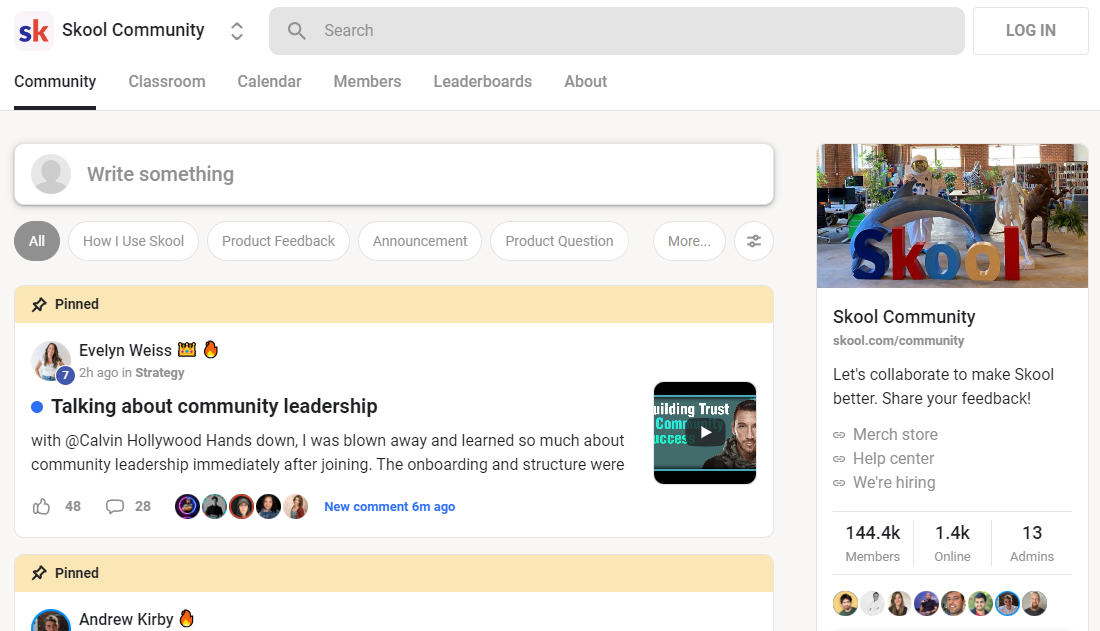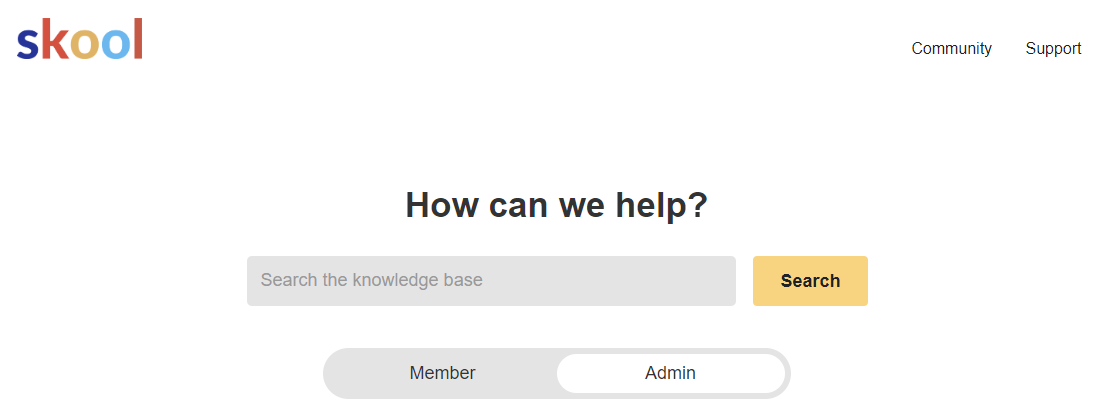Skool offers best-in-class gamification attributes that increase involvement. As an example, participants can gain levels based on their involvement, which unlock training course web content and other rewards that additionally inspire them.
Previously, designers needed to make use of different tools for holding training courses, developing areas and handling email marketing. This developed a disjointed experience for both designers and their audiences.
Developing Courses
Skool has a basic, easy to use user interface and focuses on neighborhood building and course hosting over various other functions. It permits developers to create a dynamic community for their programs and mentoring programs by linking them with the best target market. This likewise helps them keep an eye on the health of their material business with the help of a straightforward dashboard.

To start, an individual can sign up for a cost-free 14-day trial of Skool. After that, they can pay $99 a month for the platform to hold a single community. There are nothing else prices choices offered for the moment. Skool likewise processes settlement and pays creators weekly, yet it does bill a 2.9% purchase cost.
Among the unique facets of Skool is that it can be made use of to create interactive programs. These can consist of online webinars, group jobs and real-time discussions. These kinds of courses motivate engagement and boost training course completion rates. In addition, Skool’s gamification attributes assist to encourage community involvement. For instance, participants can earn factors and unlock course material when they reach certain levels in the community.
Users can likewise make use of the social feed on Skool to post updates and communicate with others in the neighborhood. The feed resembles a Facebook team, however with a more controlled way of publishing. This helps to stay clear of the sort of spam and misuse that takes place on other social platforms.
Managing Communities
Skool is a really simple platform to utilize, for both participants and admins. Its simplicity is one of its major selling factors– when somebody joins your area they will not be faced with a number of alternatives or features that can thwart their experience and confuse them.
The platform begins as a personal group by default, yet you can conveniently transform this to open your community to any person that you wish to be part of it. Once you’ve done this you’ll see a social feed like you would on Facebook Groups or WhatsApp (but without all the rip-off stuff and swearing).
You can additionally include a classroom tab to your community that you can use to share academic content with your participants. This function is particularly beneficial for areas that are focused on discovering or professional growth as it aids to produce an academic structure and makes it simple for members to track their progress. On top of that, the platform has gamification components that enable members to gain factors by liking blog posts or comments. When they reach a certain degree they can open resources, such as courses, better driving interaction.
The other great thing is that Skool has a mobile application, similar to Mighty Networks or Slack, so participants can stay on par with your community and engage on the move. This is a great means to motivate and engage your members and to help them obtain support from each other when they require it, rather than simply turning to you for answers.
Who Owns Skool
Skool concentrates on gamification, enabling customers to make factors and badges for their contributions. This inspires members to engage with the area and add to conversations. Subsequently, this helps them level up and unlock perks like video clips and various other web content. Admins can also set courses to be opened at certain degrees to further drive engagement.

The Skool interface is very clean and user-friendly. Its highlights consist of the Community tab, which looks just like a Facebook team feed. Right here, customers can upload remarks and text as well as upload pictures, web links and video clips. Members can additionally see each others accounts and connect with them. Moreover, individuals can develop private teams in the community to talk about particular topics.
One more function of Skool is the Classroom tab, which is similar to a YouTube livestream or Zoom conference. Utilizing this, managers can host trainings and webinars for their students. They can also include events in the calendar to remain updated on upcoming occasions and Who Owns Skool.
Nevertheless, some facets of Skool might utilize improvement. For instance, the platform isn’t adaptable when it pertains to monetization as customers can not offer numerous prices tiers for their courses and community subscriptions. In addition, the tool lacks an e-mail advertising and marketing feature, which might be a bargain breaker for some program designers. It also doesn’t have native video clip hosting, implying that individuals require to use outside platforms like YouTube, Loom and Vimeo for their videos.
Including Content
The process for adding web content and connecting with participants on Skool is easy and uncomplicated. Admins can develop blog posts with text, GIFs, videos and polls. They can also include occasion calendars to inform area members of upcoming group Zoom calls or live streams. Furthermore, they can utilize Skool’s email broadcast function to send out a message to the entire neighborhood with a solitary click. This removes the demand for marking and list segmentation, which can be cumbersome.
Furthermore, Skool’s gamification attributes can enhance engagement and customer retention. It urges members to connect with the content on a regular basis by rewarding them with various perks. These include opening program content, earning factors and earning a place on community leaderboards.
While Skool provides a host of helpful functions for developing and delivering online training courses, it’s except everyone. The platform is best for coaches, specialists and various other info business owners. Nevertheless, the price can be a challenge for some people wanting to monetize their online web content.
In addition, the absence of basic rates and a short free trial may be a deterrent for lots of. Additionally, the platform’s laser-focus on eLearning can make it less desirable for individuals who wish to offer various other digital items. Nonetheless, regardless of these drawbacks, Who Owns Skool is still a feasible alternative for any person aiming to create and generate income from on-line courses.